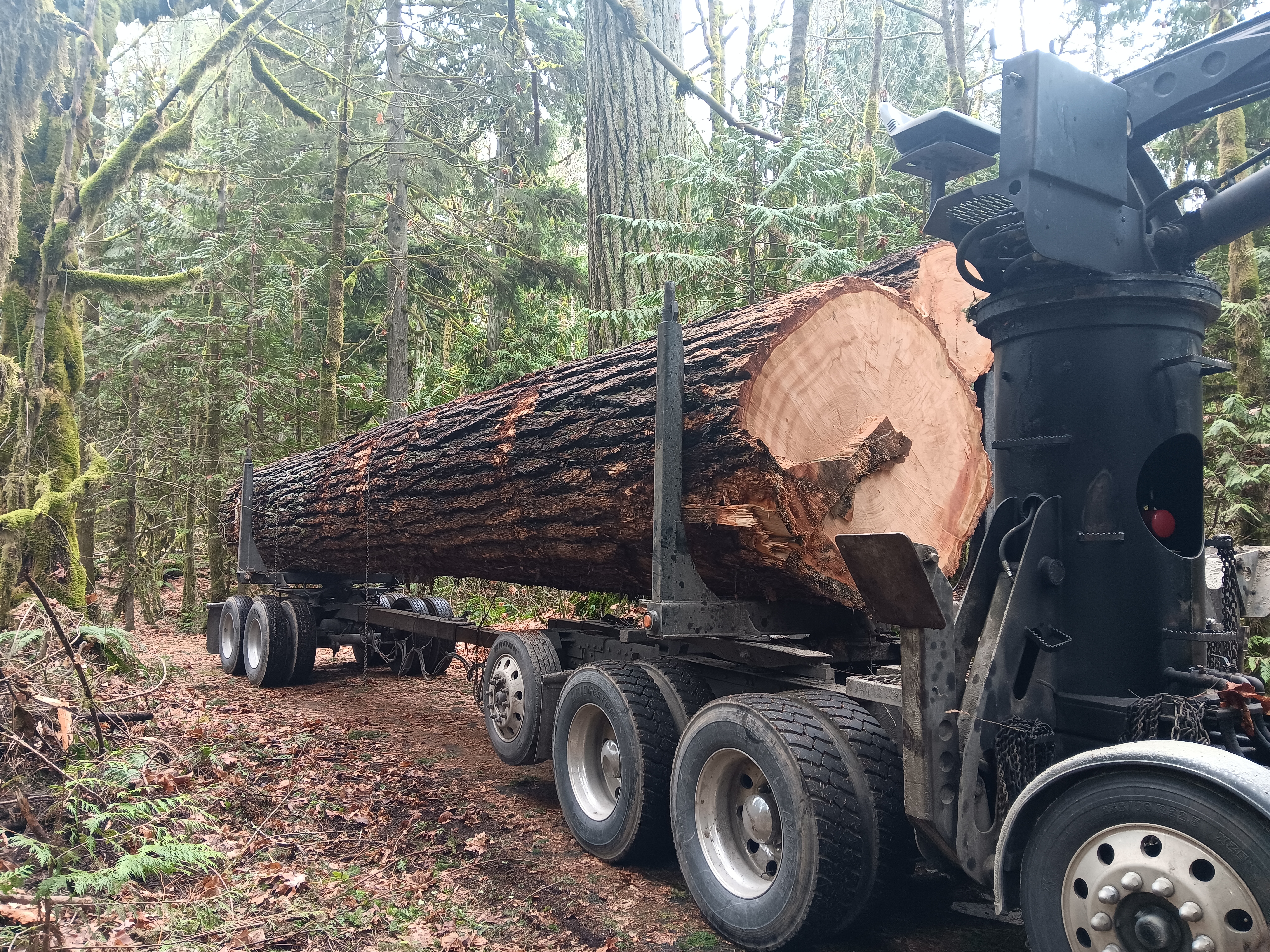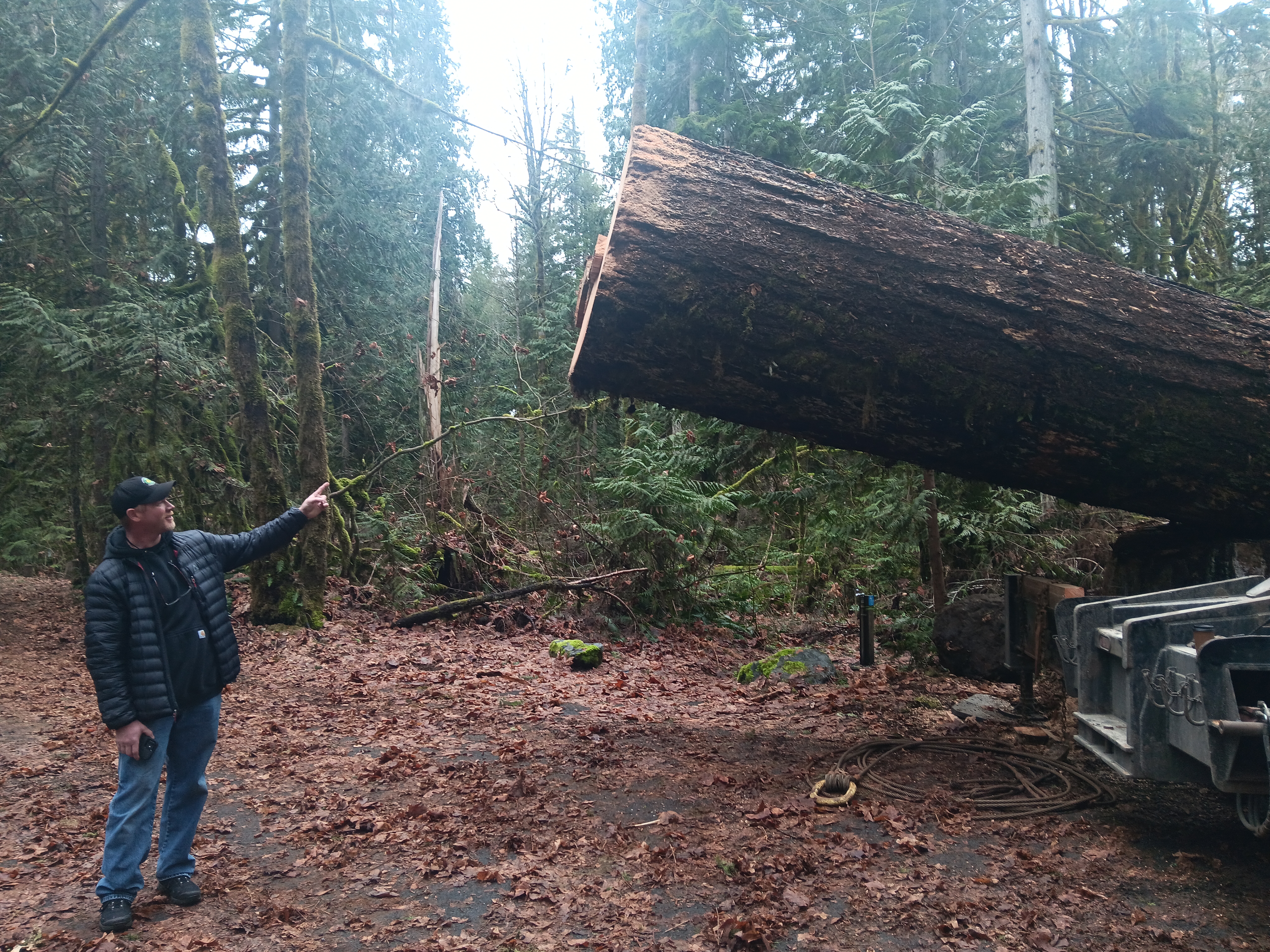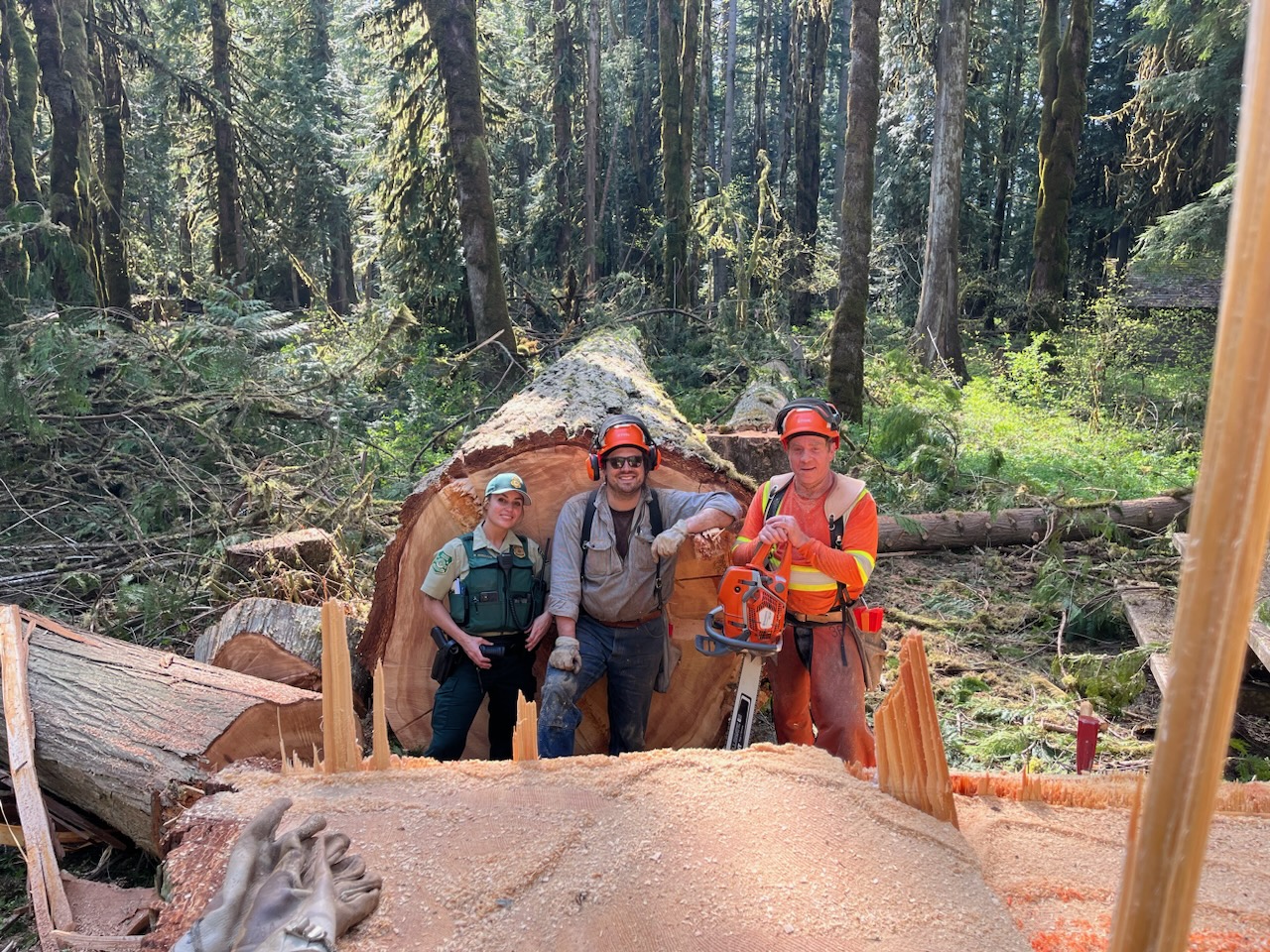To New Beginnings!
A piece of the Mt. Baker-Snoqualmie will now have a home in the San Francisco Bay.
Working together to protect our natural resources and provide stewardship for the land is a priority for the USDA Forest Service and the Mt Baker-Snoqualmie National Forest (MBS). Working with other agencies toward that common goal is the icing on the cake! That’s why helping the San Francisco Maritime National Park restore one of their ships was such a great opportunity for us.
The ship is the C.A. Thayer, a vessel that first launched in 1895 by Hans Ditlev Bendixsen in Fairhaven, CA with a crew of 4 seamen, two mates, a cook, and a captain. She was used to carry lumber from the Puget Sound into San Francisco and Los Angeles, and even made voyages as far as Australia. The wooden-hulled, three-mast schooner is routinely restored as part of preventive maintenance, but finding the right size and dimensions for lumber can prove challenging and costly.
A few trees from the Money Creek Campground proved to be just what the C.A. Thayer needed to get back into mint condition. Through a Federal Free to Use request from the San Francisco Maritime National Park Service, the MBS was able to donate the trees for the ship’s restoration. A Federal Free to Use request by the National Park Service can be used under FS manual 2462.2, part 7a, where a regional forester can grant free use of National Forest System timber to other agencies. Timber can be donated in this way if local needs, individual forest protections, and National Environmental Policy Act provisions have been satisfied.
Photo from the removal, provided by MBS Forestry Technician Cameron Elias.

The Cedar and Douglas Fir were felled in the Money Creek Campground by MBS employees after it was concluded that the trees were a hazard in the campground due to root rot. Their time on the forest might have been coming to an end, but a second life was waiting. Historic preservation of the fleet vessels in the San Francisco Bay required unique dimensions for planks, 4” thick by 16” wide by 40’ long, and the felled trees had all the right measurements.
South Zone Fire Management Officer Ted Hargraves and the cedar. Photo Provided by MBS Forestry Technician Cameron Elias.

Being able to donate an old growth tree for a restoration project on a national park was a great situation for everyone involved. The San Francisco Maritime National Park can keep their ships restored with the right size lumber and we were able to ensure that two of our beloved trees get a second life. Removal without waste and a safe campground for our visitors all wrapped up into one project. What a beautiful ending, and second beginning.
Felling Crew with the cedar log. Photo provided by MBS Forestry Technician Cameron Elias.

Additional notes:
Old growth forests are also known as primary forests, mature forests, frontier forests, and/or virgin forests. You can expect to find a high level of complexity in old growth forests which leads to a lot of unique microhabitats and high biodiversity. Mature and old growth stands can offer other benefits like carbon sequestration, beauty, soil productivity, and diverse cultural and tribal values. Like other types, old growth forests are being affected by climate change. The mature and old growth initiative is part of an overarching climate-informed strategy aimed at protecting our forests and combating climate-related impacts.
The Money Creek Campground is situated on the banks of the South Fork Skykomish River, near the Miller River/Money Creek Winter Sports Area and Stevens Pass Historic District. The campgrounds offer tent and RV camping, picnic tables, vault toilets, and drinking water. In addition to the amenities, these grounds are home to popular recreation like skiing and snowshoeing in the winter months, and hiking, fishing, and biking during warmer weather. Interpretive programs and exhibits at the Mt. Rainier and North Cascades National Parks also draw visitors to the area, where they can learn about the diverse landscape and history of the area.
Alerts & Warnings
- Mallardy Ridge Trailhead and FSR 4030 and 4032 Closure
- Harris Lake Trailhead and FSR 5510 Closed
- Middle Fork Camping Closure
- Delays possible on PCT at the Summit at Snoqualmie Ski Area
- FSR 4110 Road Closure
- Camping Restrictions
- Fireworks and Explosive Targets Prohibition
- Read this Before Climbing or Backpacking on Mt. Baker
- Hwy 542 Closed to Artist Point
- New food storage rules for Mt. Baker-Snoqualmie NF
- Alcohol Prohibitions

